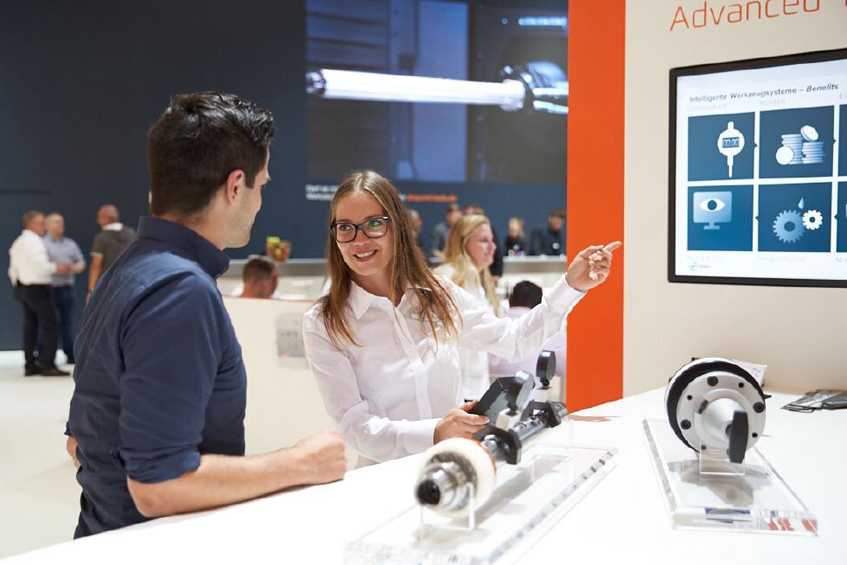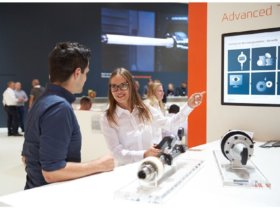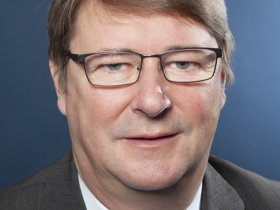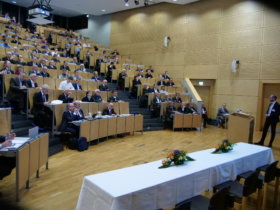Digital fitness regime for machinists
Machinists are getting used to the new terminology. Tool manufacturers and their users are now familiar with digital twins, the cloud and the smart evaluation of Big Data. All this is happening in response to the “Industrial Internet of Things IIoT” – one of the key themes of EMO Hannover 2019.

According to Prof. Frank Barthelmä, Managing Director of GFE Gesellschaft für Fertigungstechnik und Entwicklung Schmalkalden e.V., the digitalisation of metalworking stands or falls with intelligent tools. “Even self-optimising machine tools can only function if they communicate effectively, both internally and externally”, explains the organiser of the Schmalkalden Tool Conference, which took place in November 2018. “And that’s why the tools themselves continue to play a critical role.” Manufacturers of precision tools, clamping tools and measurement technology therefore need to pay great attention to digitalisation and networking – including everything from data generation in rotating tools through to cloud-based solutions. Barthelmä: “After all, it is networking which enables integrated services.”
New services thanks to networking
Thuringia-based Barthelmä envisages even closer liaison between customers and suppliers in the next five to ten years. In the future, product users will be included in the data transfer chain at a much earlier stage. In his opinion, preparatory or supporting services such as predictive maintenance will come to play an important role as integrated elements of production.
The message is being heeded by industry and is now being acted upon by many manufacturers. One such example is c-Com GmbH, a start-up of Mapal Präzisionswerkzeuge Dr. Kress KG from Aalen. The IT newcomer offers e.g. Software as a Service (SaaS ) on an open cloud platform for tool administration. “Planning, reprocessing and optimising tools take up a lot of time,” says Giari Fiorucci, Managing Director of the Mapal subsidiary. “These tasks generate large amounts of data, yet many users still perform them manually.” In many cases the different participants need the same data, yet it is generated multiple times and maintained in redundant databases. The situation is different with a cloud-based solution. Digital twins – virtual mappings of the tool data which incorporate many key parameters such as cutting data, tool life or the number of reprocessings – are created on such a platform.
Bringing partners together in the cloud
Central data acquisition makes it unnecessary to generate redundant data records. The cloud not only concentrates the tool data, but also improves the interaction. As Fiorucci states concerning this unique selling point: “We bring all the machining industry business partners together on a cross-company basis.” These include machining companies, tool manufacturers and service providers, such as those offering regrinding or coating.
Measurement technology enables rapid control
Prime examples of digitalisation include intelligent tools that can perform new tasks thanks to the new, easy-to-integrate sensors. Measurement technology is required that enables users to intervene immediately and control the process, thus reducing wear and tear and preventing tool damage. LMT Kieninger GmbH & Co. KG, based in Lahr, has created a so-called reverse counterbore for drilling holes e.g. in large gas turbines, for a company in the energy sector. Christian Krieg, Head of Research and Development: “Sensors indicate whether the individual cutting elements are extended or retracted. This prevents damage to the components or tools.” In tool and mould making, integrated sensors within the tool holders monitor the process forces and any vibrations which are generated. This helps to avoid chatter marks. It should eventually be possible to use such intelligent tools in an autonomous control system that adapts cutting parameters to the milling process in real time.
Schmalkalden: Virtual machining with artificial intelligence
In November 2018, digitalisation was also the focus of the Schmalkalder Werkzeugtagung, a conference organised by the GFE Gesellschaft für Fertigungstechnik und Entwicklung Schmalkalden e.V., the VDMA Precision Tools association and the Schmalkalden University of Applied Sciences. All the major tool and machine manufacturers, institutes and many prominent users such as Audi, BMW, Bosch, Daimler or VW were represented at the conference. The 180 or so participants all agreed that virtual machining, which is increasingly using real-time, computer-based artificial intelligence (AI) methods for risk-free optimisation of actual machining processes, is on the rise. However, the users in Schmalkalden were also aware of the limits. AI is a useful tool, but it must always be deployed and monitored by vigilant operators. The industry also takes a critical view of the now seemingly ubiquitous use of simulation. Although it saves machine tool operators much expensive testing, it does not do away completely with the need for actual validation. “Nevertheless, participants agreed that new cutting materials, geometries and coatings mean that machining is still lucrative,” says GFE Managing Director Barthelmä.
The industry takes an ambivalent view of a further major development alongside digitalisation. This is additive manufacturing, which is being hyped under the name 3D printing in the mass media. The conference participants unanimously agreed that additive processes represent an interesting supplement, but that they cannot completely replace machining, especially since industrial 3D printing does not yet permit near-net-shape machining. Final finishing, such as smoothing or polishing, is still required in most cases.
The World Cutting Tools Conference (WCTC) of the VDMA Precision Tools association, to be held in Tegernsee from 26 to 29 June 2019, will showcase the latest digitalisation developments. The industry will then have a further opportunity five months later at EMO Hannover, from 16 to 21 September 2019. The agenda in Tegernsee and in Hanover will not be confined exclusively to technical aspects, as tool experts like Barthelmä are already thinking ahead: “Also of interest are topics that go beyond the purely technical, such as legal aspects surrounding work safety and data security.” These will also be the focus of various forums and stands at EMO Hannover 2019.
Author: Nikolaus Fecht, specialist journalist from Gelsenkirchen
Size: around 6,700 characters including blanks








